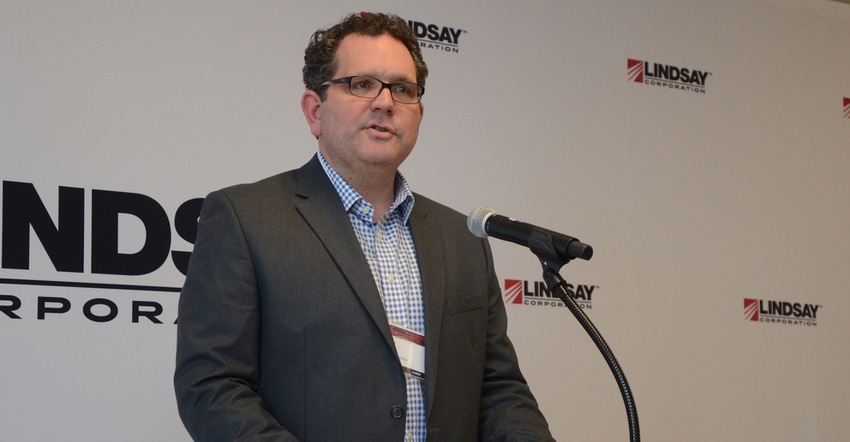
Lindsay Corp. offers a new data connection between its pivot telemetry tool, FieldNet, and the John Deere Operations Center to improve grower access to farm irrigation data — as well as several other updates surrounding FieldNet and FieldNet Advisor.
"This connection will consolidate the management of irrigation systems and other equipment, agronomic data and farm operations. The ability to operate through one integrated, seamless platform means growers will be able to make faster, better-informed decisions, saving time on data entry, improving productivity and profitability," says Randy Wood, president of agricultural irrigation at Lindsay. "More data integrations, more data collaborations like this are in progress. We're fully aware of the power that comes with the ability to leverage that big data, and the need to work together with other organizations to better utilize the data to make smart, informed irrigation decisions."
The biggest benefit from this integration, says Kurtis Charling, FieldNet business solutions manager, is ease of use. With the push of a button, the user can automatically download geospatially referenced planting and agronomic data from John Deere's Operations Center to FieldNet.
"Prior to this, growers had to manually draw their crop zones in the tool on a map and manually enter their information. With this John Deere Operations Center integration, it delineates those zones automatically so they don't have to manually enter in all that data," Charling says.
"Secondly, because data is geospatially referenced with John Deere Operations Center, the tractor is tracking where seed is planted on the entire field, we increase the precision of our irrigation recommendations through FieldNet Advisor and variable-rate irrigation prescriptions,” he says.
Wood says Lindsay has a new commitment to help growers worldwide save over 700 billion gallons of water and over 1 billion kilowatt hours of energy by the 2022 through current use and new capabilities coming to FieldNet and FieldNet Advisor.
"The amount of water that could be saved could be worth more than what's currently in the Lake of the Ozarks, roughly half of what's in Louisiana's Lake Pontchartrain," Wood says. "In terms of carbon emissions, the energy savings are the equivalent of 200,000 passenger vehicles operating for one year, or the equivalent of burning 100 million gallons of gasoline."
On March 6, Lindsay launched a new real-time counter on its FieldNet website, myfieldnet.com, counting the amount of gallons of water and kilowatts-hours of energy saved through FieldNet.
"What makes us think we can obtain these goals? Last year we estimated that FieldNet Advisor helped growers save almost 5 billion gallons of water, along with nearly 8 million kilowatts hours of energy," Wood says. "When we add the savings expected from this year, those numbers increase to more than 39 billion gallons of water, and 55 million kilowatt-hours of energy use."
Wood says FieldNet will be available in 17 countries and can be used on at least 12 crops by the end of 2018. Lindsay also is planning to add new capabilities to FieldNet and FieldNet Advisor, including options for hydraulic-drive pivots, and for controlling and monitoring pumps and engines through FieldNet, as well as improved imagery and new crops for FieldNet Advisor. "With the commitment we're making today to continue to enhance the technology and extend its capabilities to more growers around the world, we're confident we can help growers meet these goals," Wood says.
About the Author(s)
You May Also Like






